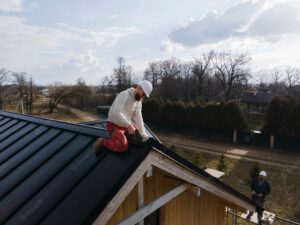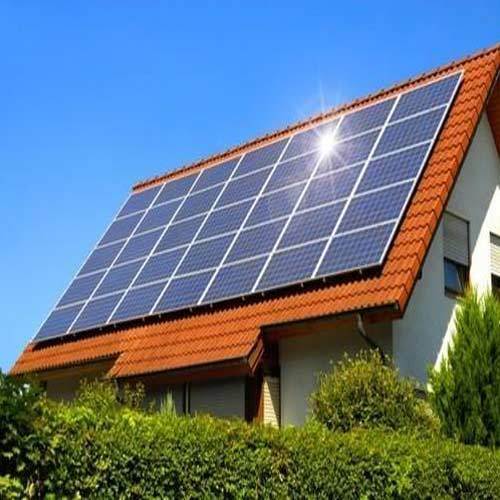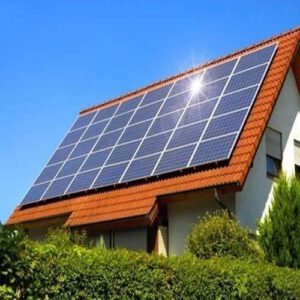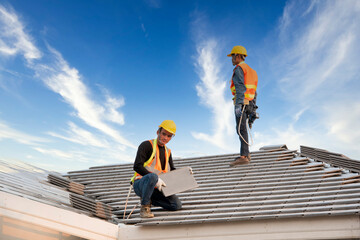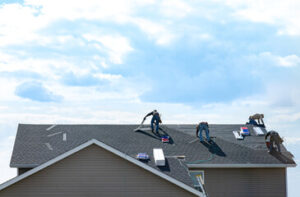Unlike residential roofs, industrial properties house sensitive equipment and materials that require specific accommodations. While shingles and metal are common roofing materials for commercial properties, industrial buildings usually require membrane materials like PVC or EPDM.
Industrial roofs also tend to have lower slopes and are often flat or larger than typical residential roofs. These types of industrial roofs need to be properly installed by an experienced roofing contractor. For professional help, contact Roofing Companies Colorado Springs.
A lot of different roofing materials exist on the market. Choosing the right one for your building project can be challenging and requires a deep understanding of the pros and cons of each type of material. To help you decide, let’s explore the various types of industrial roofing materials available today.
A single-ply membrane industrial roofing material is thermoplastic polyolefin (TPO). TPO roofs are a low-cost option for flat and sloped commercial buildings. TPO has a long lifespan and provides superior protection against the elements.
Ethylene propylene diene methylene (EPDM) is a rubber roofing material that is highly durable and affordable. EPDM is highly energy-efficient and can be used for flat or sloped roofs.
Built-up roofing, also known as BUR, is a common choice for flat roofs. These industrial roofs are fabricated on-site and consist of alternating layers of bitumen and reinforcement fabrics such as polyester or glass-fiber mats. These materials are then covered with gravel to reflect UV rays and create a watertight seal. BUR systems are redundant, so if a layer breaks down, multiple remaining layers provide immediate protection. This type of roof is also popular for its ability to withstand extreme weather conditions and heavy foot traffic.
Modified bitumen is a similar roofing system that is more versatile than BUR. It can be installed using heat via torches or through a cold process that eliminates the need for heat and makes installation quicker. This type of roof is a good choice for industrial roofs that may see a lot of foot traffic.
PVC is another type of roofing that is highly durable and affordable. It is a great option for flat or low-sloped roofs. PVC roofs can be installed in a variety of ways, including glued, mechanically attached, or ballasted. It is also fire-resistant and has excellent insulation qualities.
Spray polyurethane foam (SPF) is a modern and environmentally friendly roofing option. It can be applied to any type of commercial or industrial roof, as long as it is flatter than a normal roof. SPF is sprayed on as a liquid and expands into a pliable foam. It is highly energy-efficient and can even help reduce your cooling costs.
Installation
Industrial roofing requires different roofing products and techniques than commercial roofing. The main reason is that industrial facilities tend to be much larger in scale. As such, they need to withstand more extreme weather conditions and heavier loads. Industrial buildings also have a lot of activity going on inside, which means they are more susceptible to leaks and damage.
Luckily, the good news is that industrial roofing contractors are familiar with these specific types of issues. As a result, they can provide the right solutions.
Most importantly, it’s essential to choose the right materials for industrial roofing. For instance, shingles or metal are unlikely to be used on industrial properties because they won’t hold up well under the stress of constant foot traffic. Instead, a membrane material such as EPDM or TPO will be more appropriate.
The good news is that both of these options are available in a wide range of colors and thicknesses to meet the needs of industrial building owners. They are also highly reflective and can help reduce energy costs by reflecting the sun’s UV rays.
Another option is built-up roofing, which consists of layers of bitumen and roofing felts that can be hot or cold applied. The mopping of hot asphalt or coal tar can give this type of industrial roof an added layer of protection against leaks and inclement weather.
This type of industrial roof can take longer to install than other options. This is because it is usually applied in multiple layers, which may require extra time to cure between each application. However, it does have one of the longest life expectancies of any flat roof system.
Many industrial properties are located in warmer climates, which means the roof will need to withstand heat and moisture. For this reason, EPDM is an ideal industrial roofing solution because it can withstand high temperatures and resist the effects of rainwater, wind, UV rays, and ozone.
Aside from EPDM, other choices for industrial roofing include TPO and PVC. TPO and PVC single-ply roofing membranes are made from a blend of polypropylene, ethylene, and rubber and are manufactured in sheets that can be 10 or 20 feet wide. These membranes are then rolled onto the industrial property and secured with bonding cement or ballasts.
Warranty
When a new roof is installed, it’s important to ensure you have the right protection for your investment. Fortunately, there are many warranties available. However, not all are created equal. Some come with restrictions that can impact the quality and longevity of your roof. To avoid any surprises, it’s best to consult with a roofing expert to sift through the fine print and understand the warranties offered by the manufacturer and the contractor.
Manufacturer warranties are based on the actual roofing materials and typically cover only the materials themselves for a specific time period. For example, shingle manufacturers offer limited lifetime warranties, PVC or TPO manufacturers offer 20- to 25-year warranties, and coating systems have warranties of 10 to 18 years.
In contrast, contractor warranties are based on the actual installation of the roof and not the roofing materials. A reputable roofing contractor will stand behind their work and provide a warranty that covers all aspects of the construction. Typically referred to as a labor or workmanship warranty, the duration of this type of warranty will vary between contractors and can range from two to five years.
The most comprehensive warranty is a manufacturer’s material and labor warranty with no dollar limit (NDL). This option is also often combined with a 72 MPH wind speed rider, which eliminates any owner expense related to damage caused by winds or storms that exceed this threshold.
There are several other types of manufacturer warranties. These include a prorated warranty, which reduces the percentage of the cost of repair or replacement as time goes by. It is important to understand the warranty you are receiving, as this can significantly affect your investment.
Some roofing contractors use a combination of manufacturers’ warranties and a standard contractor warranty to give their customers the maximum protection for their roofing investment. A good contractor will take the time to help their customers understand all of their options and be clear about what is and isn’t covered by each type of warranty. In addition, a trustworthy roofing contractor will require proof of annual maintenance in order for the warranties to remain in effect.
Maintenance
The roof is one of the most important components on an industrial property, providing protection from environmental assaults and adding structural integrity. It is therefore vital to keep it in good condition, and this requires periodic inspections by roofing professionals who are certified by the roof manufacturer. Having the correct maintenance procedures in place will not only extend the life of the roof but also provide peace of mind for building owners and tenants.
Typical maintenance procedures for an industrial roof include cleaning debris, repairing leaks, removing tree limbs, and maintaining gutters. These are all essential steps in avoiding large repair bills and preventing damage from extreme seasonal weather. It is also wise to have entry points checked for the presence of squirrels, bats, or rats that can chew through the rubber membrane and cause serious problems with the building’s interior.
Drains, scuppers, and gutters should be inspected for blocked areas, moss, and watermarks, as these indicate that the drains are not functioning properly. This can result in ponding water on the roof surface, which degrades the membrane over time and is a source of leaks. The roof should be cleaned regularly to avoid the buildup of debris, which can restrict drainage.
Leaks on an industrial roof can cause extensive damage, not only destroying inventory and equipment but also affecting the internal structure of the building. The chain reaction can extend to the underlying support system and even electrical systems. Therefore, a leaking industrial roof needs to be repaired as quickly as possible.
An industrial flat roof can be easily inspected by a professional roofer, who will use a checklist to ensure that all aspects of the roof are in good condition. This checklist can include examining the entire roof field membrane, evaluating the structural components, and inspecting drains, scuppers, and gutters. The inspection will be documented and provided to the property owner as a record of the roof’s health. It will also help determine if the repairs and maintenance are in compliance with any requirements of the roof’s warranty. This can be particularly useful for new construction projects where the roof manufacturer has specified certain fastening patterns or other details that must be followed in order to maintain the validity of the warranty.

